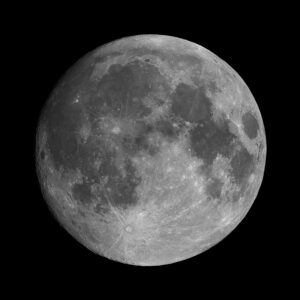Nov
26
Earth Fossils on the Moon?

As I mentioned in my recent “Why a Spiral Galaxy?” post, I have been slowly working my way through Improbable Planet (2016), in which Dr. Hugh Ross reviews the increasing evidence of fine-tuning in situating and preparing planet Earth for humanity. Using the analogy of building a large and complex edifice, Ross’s eighth chapter is “Construction Begins below Ground”, beginning with a section named “The Search for Building Blocks” which talks about looking for fossils of Earth’s earliest life-form(s). Strangely, our best bet may be to look on the Moon!
Don’t be scared off by a couple strange and/or long words. I promise you’ll get the idea…
— — —
How helpful it would be to have actual fossils of Earth’s earliest life-forms!
A team of researchers in Germany and Switzerland proposed a new tool that may lead to unearthing the next best thing. They found that certain iron-oxidizing bacteria produce twisted stalk-like structures that can survive high heat and high pressure, such as that produced by extensive diagenesis (transformation of sediments at temperatures and pressures less extreme than those required to form metamorphic rock). They observed such structures in material taken from 1.9-billion-year-old rock formations deep inside a silver mine in Germany’s Black Forest. Testing showed the twisted stalks to be remarkably heat and pressure resistant. If similar structures were to be discovered in the 3.8-billion-year-old metamorphic rocks of Greenland, they would provide strong evidence that bacterial life existed very early in Earth’s history.
Until this finding becomes available, studies rely primarily on geochemical markers for life. The long-term effects of plate tectonic activity, volcanism, and erosion have nearly destroyed the chances of finding intact fossils of earliest life — at least on Earth’s surface. The good news is that while these fossils were being obliterated on Earth, they might well have been transported, in pristine form, to the Moon.
At the time of life’s origin, comets, asteroids, and meteorites heavily bombarded Earth. These colliders ejected large amounts of Earth’s surface material into outer space, and a substantial quantity of that material would have ended up on the Moon. Astronomers have calculated that each square kilometer of a region around 50′ west and 85′ south on the smiling face of the Moon received some 300-500 kilograms of Earth material, all of it arriving via low-velocity impacts. For 43 percent of these impacts, the vertical arrival speed would have been less than 1 kilometer per second.

Researchers can expect to find the fossilized remains of Earth’s first life embedded in the material wafted up to the Moon from collision events on Earth. Given the slow-speed impacts and the lack of geological activity on the Moon in the era since life originated on Earth, in all likelihood the pristine fossils of first life still remain on the Moon.
Missions to the Moon focused on recovery of these fossils could help us resolve a major debate. Nontheists and theists tell very different stories about Earth’s first life. Nontheists propose that the first organism was a single species of minute bacteria, less than 0.1 microns in diameter, low in abundance, and at least as simple as the simplest single-celled life-form existing today. Theists, by contrast, propose that the origin of life was the sudden appearance of a complex ecology of abundant single-celled organisms, many as large or larger than a micron in diameter. A targeted lunar mission could potentially go a long way toward settling this question.
— — —
This fascinating idea sounds quite promising and exciting!















